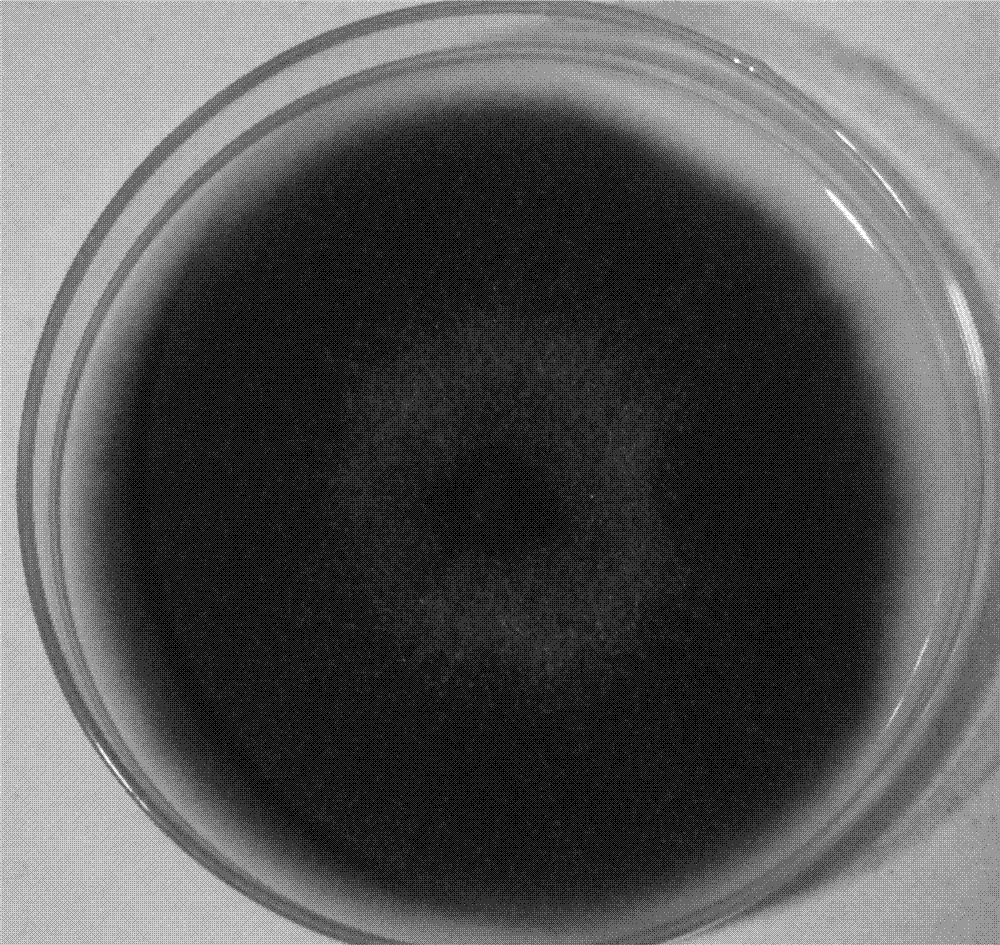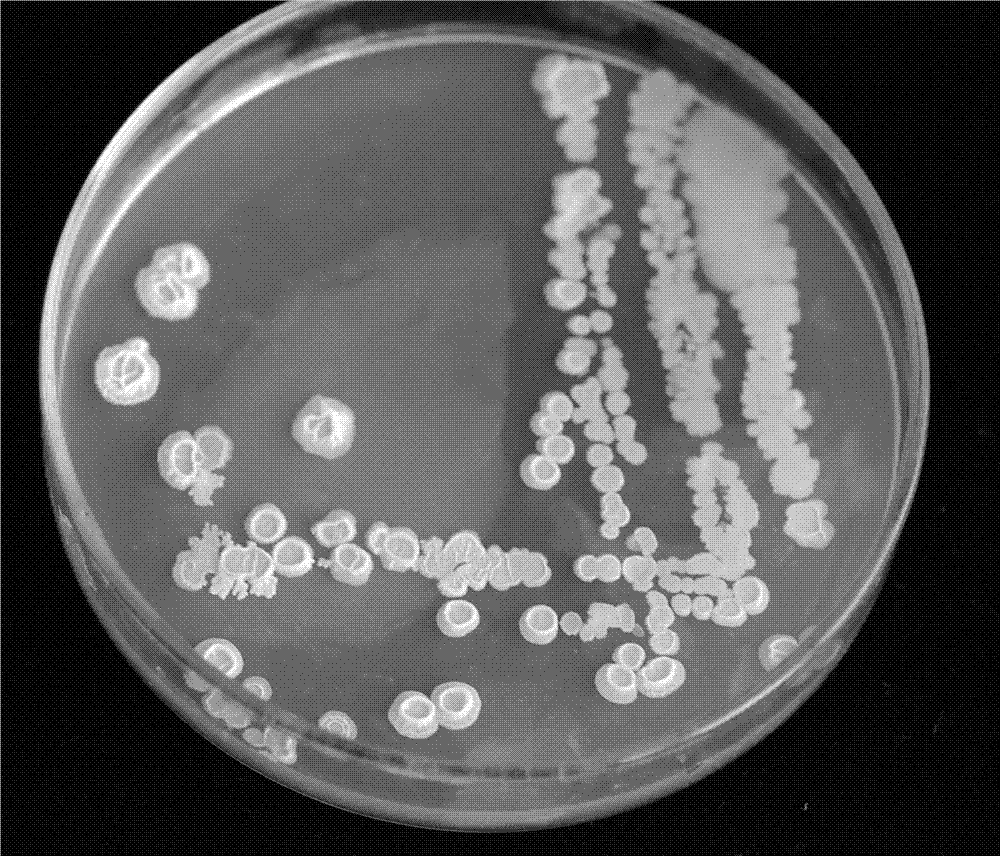Bacillus amyloliquefaciens, microbial inoculant and application thereof
A technology for dissolving starch spores and microbial inoculants, applied in the directions of microorganisms, biocides, microorganism-based methods, etc., to achieve the effects of increasing photosynthetic area, promoting nutrient production and reproductive growth, and improving peanut yield
- Summary
- Abstract
- Description
- Claims
- Application Information
AI Technical Summary
Problems solved by technology
Method used
Image
Examples
Embodiment 1
[0040] Example 1 Isolation and Screening of Bacteria with Antagonism to Peanut Leaf Spot
[0041] Soil samples from different ecological environments were collected and bacteria were isolated in the laboratory. After repeated isolation and purification on PB medium, after obtaining pure culture bacteria, Cercospora coccoides was used as the indicator bacteria (such as figure 2 Shown), the strains with high antagonistic performance were screened by the confrontation test method.
[0042] Specific steps: the above-mentioned soil samples were spread in PB medium after gradient dilution, and cultured in a constant temperature incubator at 28°C. The above-mentioned medium was prepared according to the records in the "Microbial Culture Medium Manual". The formula of the medium is: 5g of beef extract, 10g of peptone, 5g of sodium chloride, 15g of agar, 1000ml of tap water, pH7.2~7.4, sterilized at 121°C for 20min use. After colonies grow on the plate, single colonies of different ...
Embodiment 2
[0044] The antibacterial spectrum determination of embodiment 2 BA-KA1
[0045] BA- The antibacterial spectrum of KA1, BA-KA1 has a strong antagonistic effect on 9 kinds of pathogenic fungi, and the antagonistic effect on all pathogenic bacteria is more than 40%, among which the inhibitory effect on tomato early blight is the strongest, which is 74.3% .
[0046] Table 1 Inhibitory effect of Bacillus amyloliquefaciens BA-KA1 on different pathogenic fungi
[0047]
Embodiment 3
[0048] Example 3 Identification of antagonistic strains
[0049] According to the experimental content and experimental methods recorded in the "Common Bacteria System Identification Manual", the screening of the preservation number: CGMCC No.8341 was identified, and the colony morphology observation was carried out on PB medium. After the bacterial strain was streaked and inoculated, the Incubate at 28°C for 36 hours to observe the colony morphology. The colonies of the strain with the preservation number CGMCC No.8341 are nearly round, milky white in color, relatively dry and wrinkled on the surface, dull and opaque, eroded on the edges, sunken in the middle, easy to pick, the front and back of the colony or the edge and the central part consistent color (e.g. image 3 shown).
[0050] After picking and culturing the colony for 24 hours, after Gram staining, observe under the 100 times oil lens of the optical microscope, as shown in Figure 4 As shown, it can be seen und...
PUM
 Login to View More
Login to View More Abstract
Description
Claims
Application Information
 Login to View More
Login to View More - R&D
- Intellectual Property
- Life Sciences
- Materials
- Tech Scout
- Unparalleled Data Quality
- Higher Quality Content
- 60% Fewer Hallucinations
Browse by: Latest US Patents, China's latest patents, Technical Efficacy Thesaurus, Application Domain, Technology Topic, Popular Technical Reports.
© 2025 PatSnap. All rights reserved.Legal|Privacy policy|Modern Slavery Act Transparency Statement|Sitemap|About US| Contact US: help@patsnap.com



